A LOOK BETWEEN THE THORNS - Rubus fruticosus
The Southern White Admiral (Limenitis reducta) on the opening shot is ready to take off from a branch covered with berries in various stages of maturity.
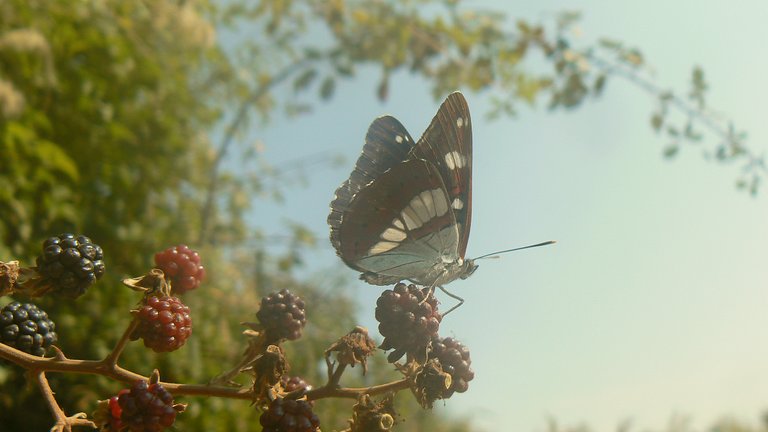
The photograph was taken some years ago, some day in the second half of summer when these shrubs were decorated with the stylish, red & black fruity design.

Every summer, large parchments of coastal terrains are covered with these tasty edibles that we in this area call kupine, and for the first time ever, while preparing this post, I learned the scientific name of this plant - Rubus fruticosus.
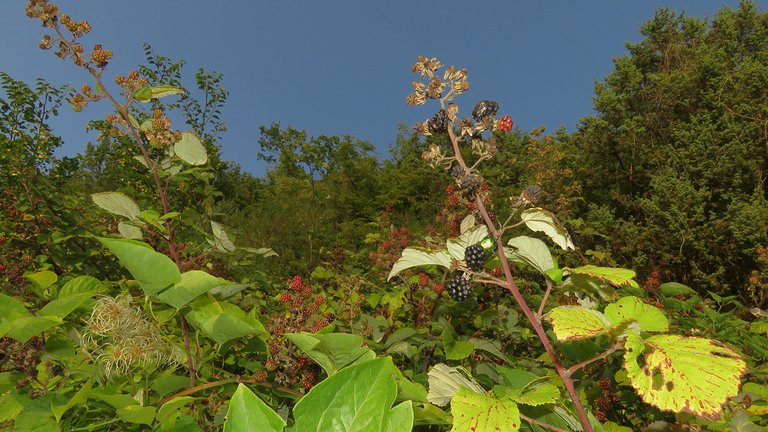
And now, after this late summer opening, is time to go back in time, when those berries where buds or flowers, and there was even more arthropod wildlife around.
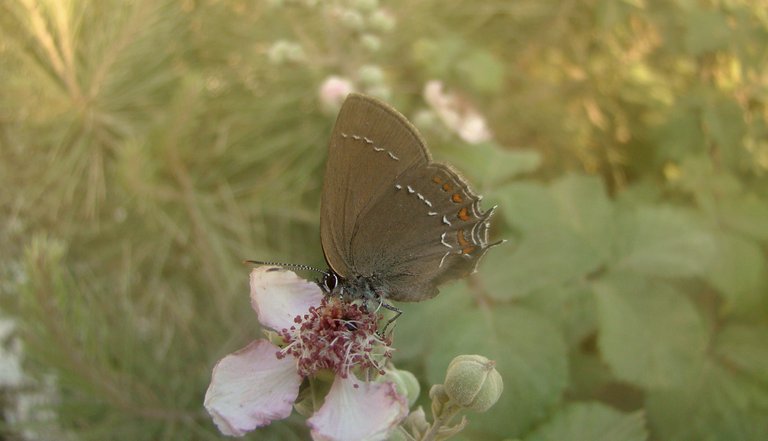 (Enlargeable)
(Enlargeable)
As the Southern White Admiral stood on the berries, a few pictures and some text ago, there on the opening photograph ... right now, here on this shot, taken a decade ago in the late spring - almost summer, you can see the small butterfly Ilex Hairstreak (Satyrium ilicis) feeding on the flower of the same plant ... and on the following photograph ...
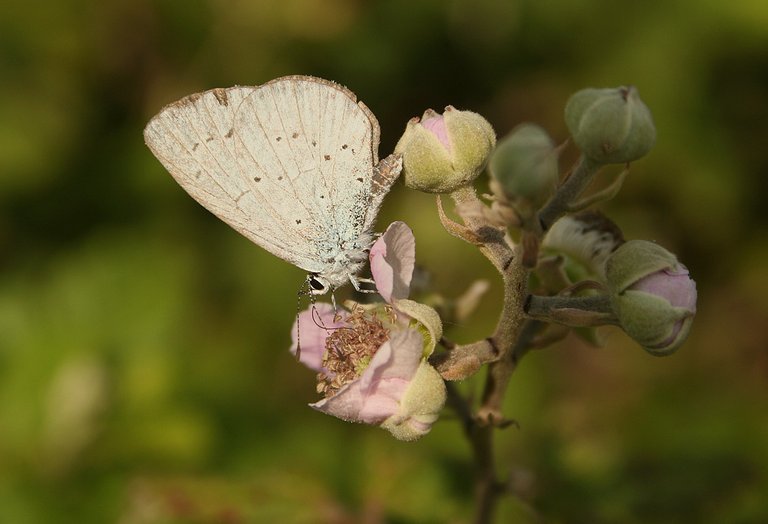
... you can take a good look at this blue butterfly, probably the Celastrina argiolus species but I'm not absolutely sure, doing the same.
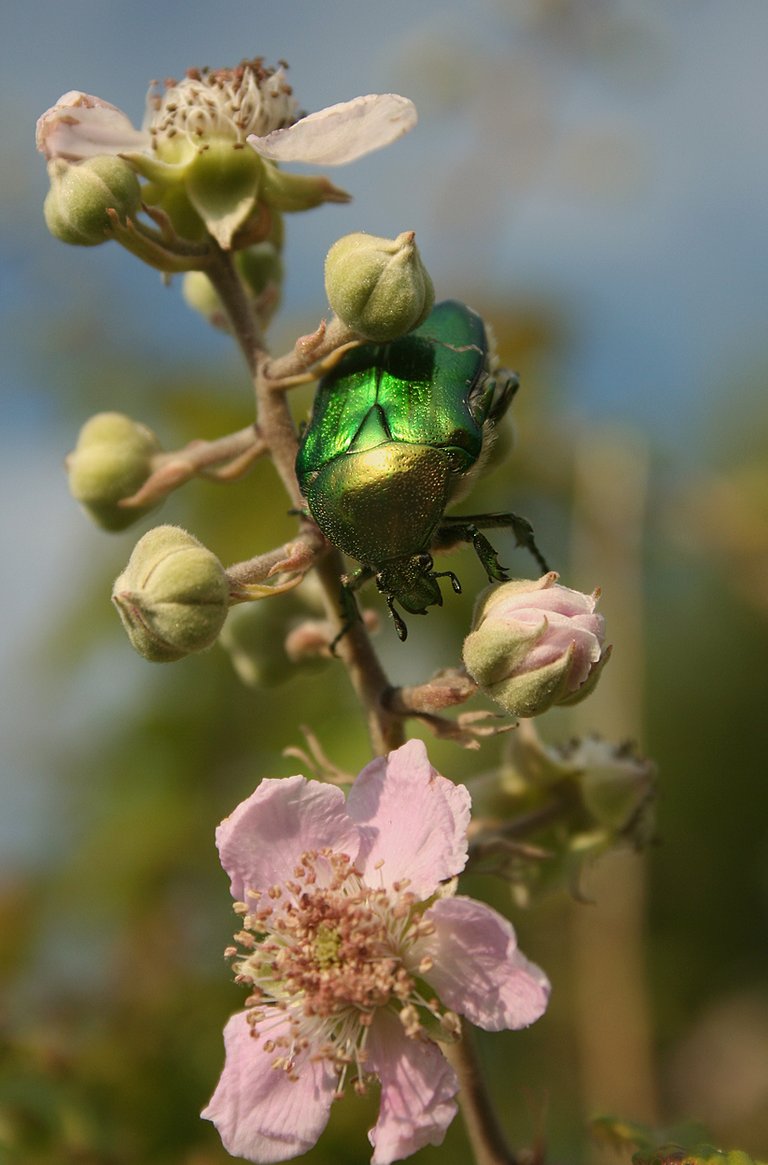
The shiny European rose chafers (Cetonia aurata) are also very active around blackberry flowers. These beautiful beetles are very common and can be present in big numbers, adding a lot to the overall beauty of the local nature in spring and summer.

Here is another colorful and very decorative beetle of a different kind ...
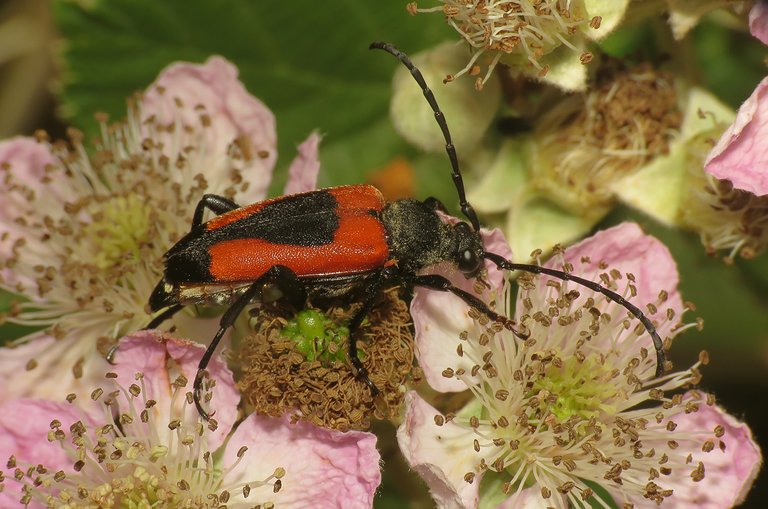
... the Stictoleptura cordigera Longhorn beetle.
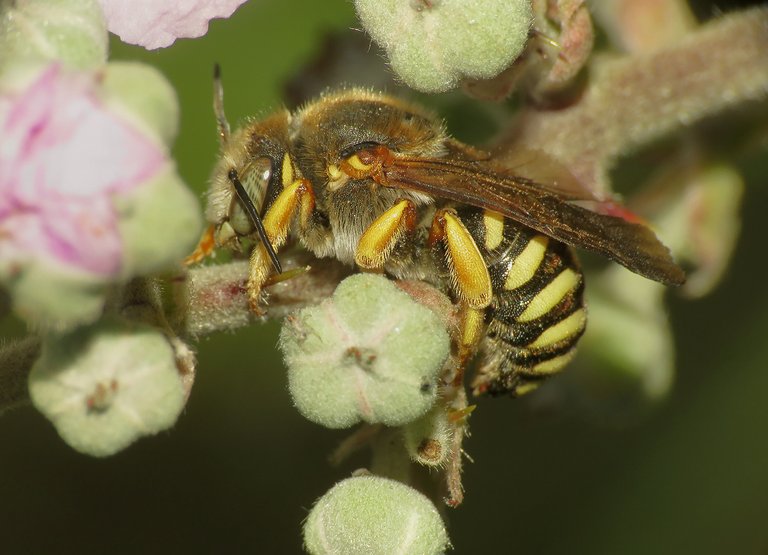
Many wild bees, big and small, are present in this area, and many of them, like the one on this photograph are regularly visiting the Blackberry flowers ... but I can't tell you the name of the species, a lot of them look pretty similar and I'm not very confident when it comes to determine the exact species.

Here you can see another very common butterfly, The Meadow Brown (Maniola jurtina) resting on the foliage.

Besides this seasonal nectar drinkers and pollen eaters, you can find many other insects hanging around these thorny shrubs for various reasons.
This nymph of the Anacridium aegyptium grasshopper, just came out of its old exoskeleton that became to small and tight.
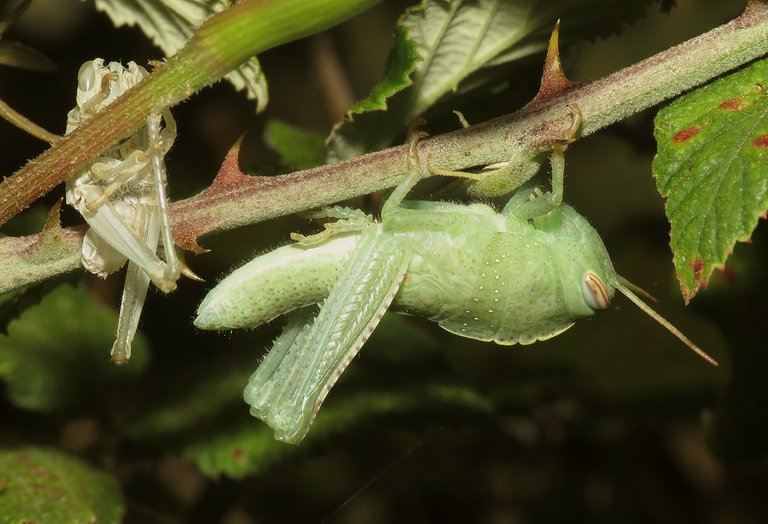
If the nymph survives all the trials and dangers of being a grasshopper, it will become a very big adult insect.
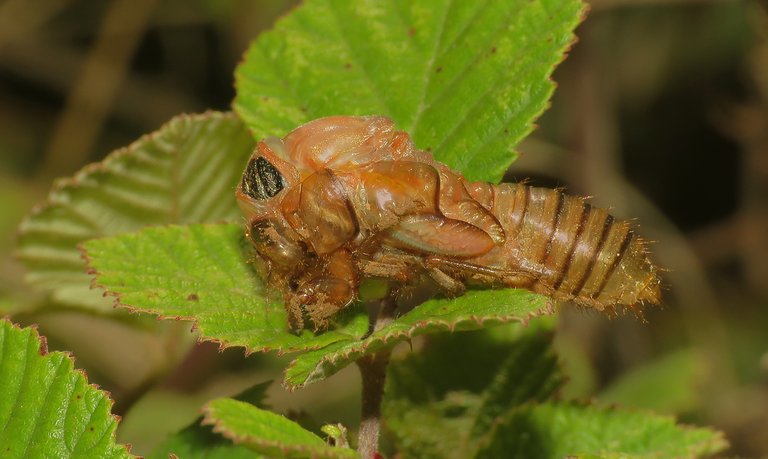
The cicada nymphs live their long nymphal lives underground and when it comes the time for the final transformation into the winged adult, they come out of the ground and climb on the shrubs and trees.
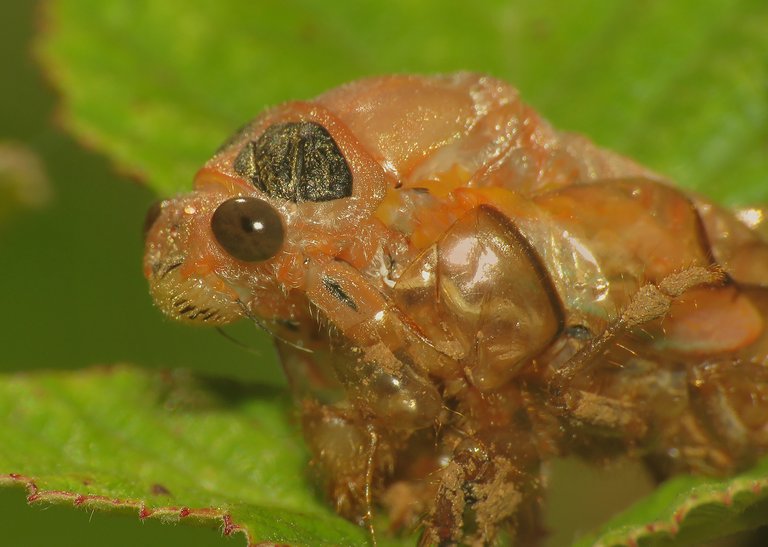
This usually happens at night ...

... out of reach of the strong summer sun ...
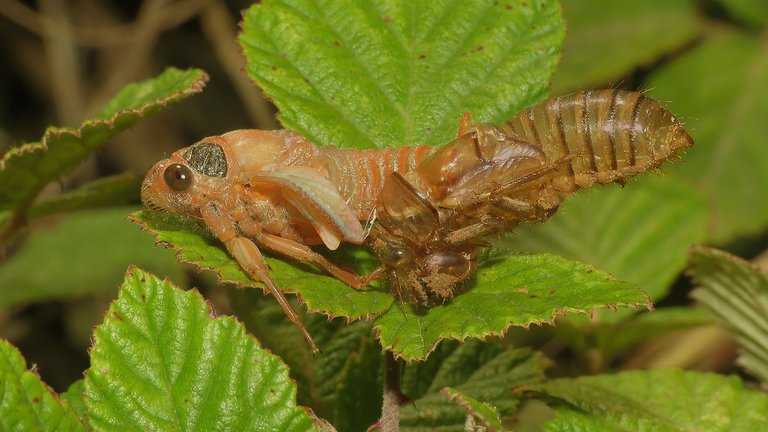
... and out of sight of many diurnal predators that could easily spot the helpless new cicada trying to get out of its old subterranean exoskeleton ... but ...

... sometimes ... very rarely in my experience ... some cicadas are late ...
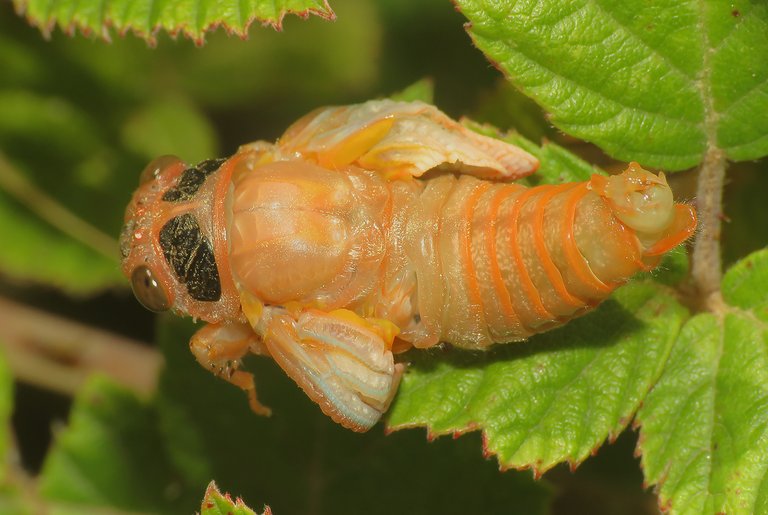
... giving me the opportunity to meticulously photograph the process late in the morning, about ten o'clock, when is easy for me to be awake and active ...
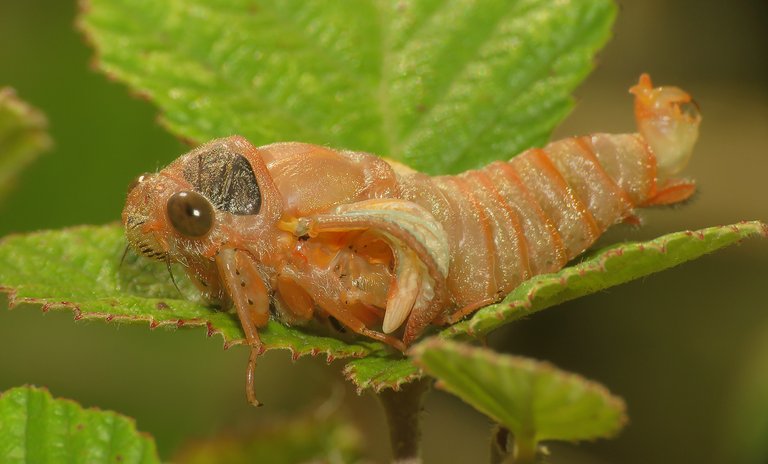
... and there is enough light to make the shooting easy.
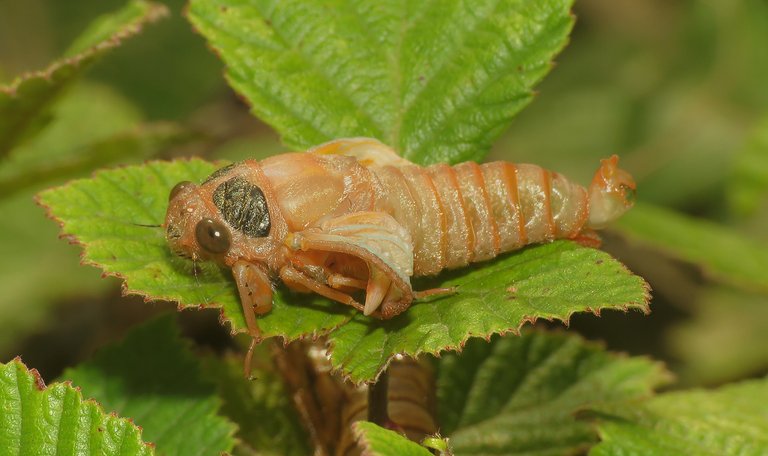
When the cicada comes out of the old skin and shape, and the wings are still folded ...
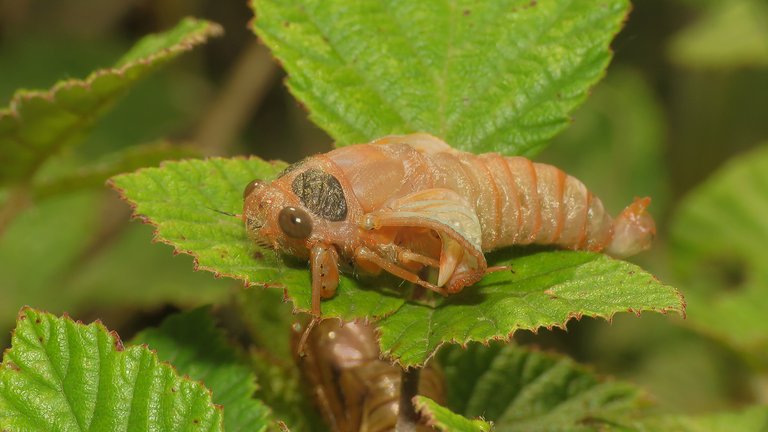
... the brand-new insect looks a lot like some strange shrimp out of water.
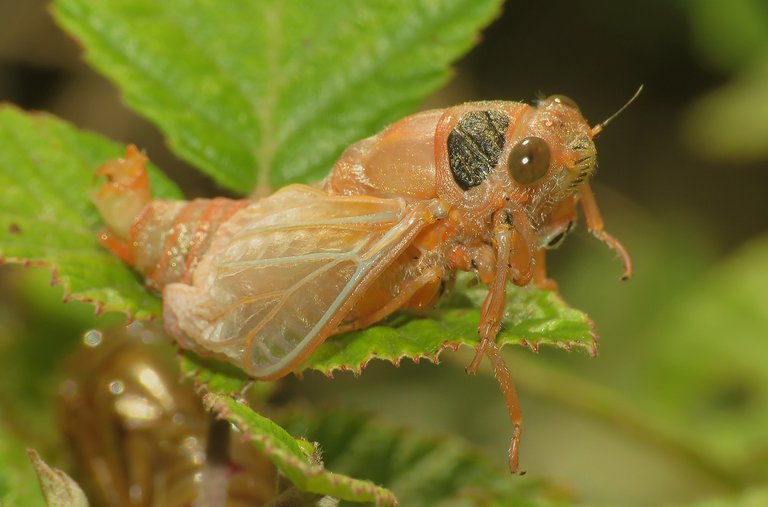
Then, as the wings are unfolding ...
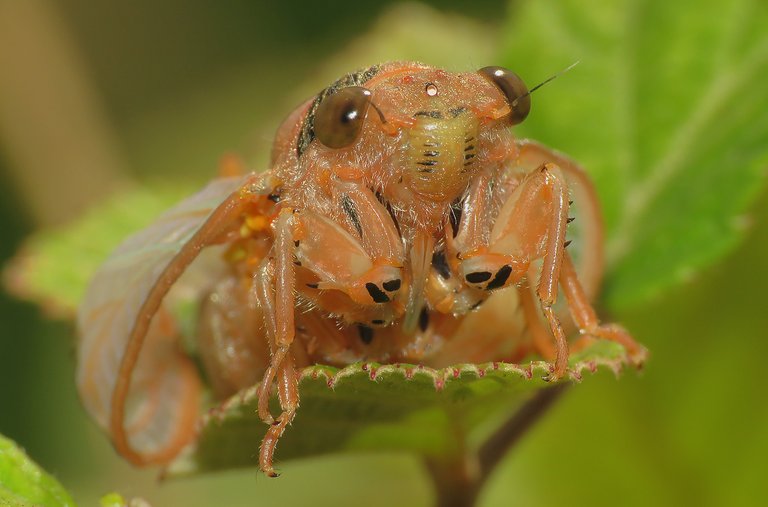
... this clumsy, shrimp - like creature ...

... turns into a very elegant insect.
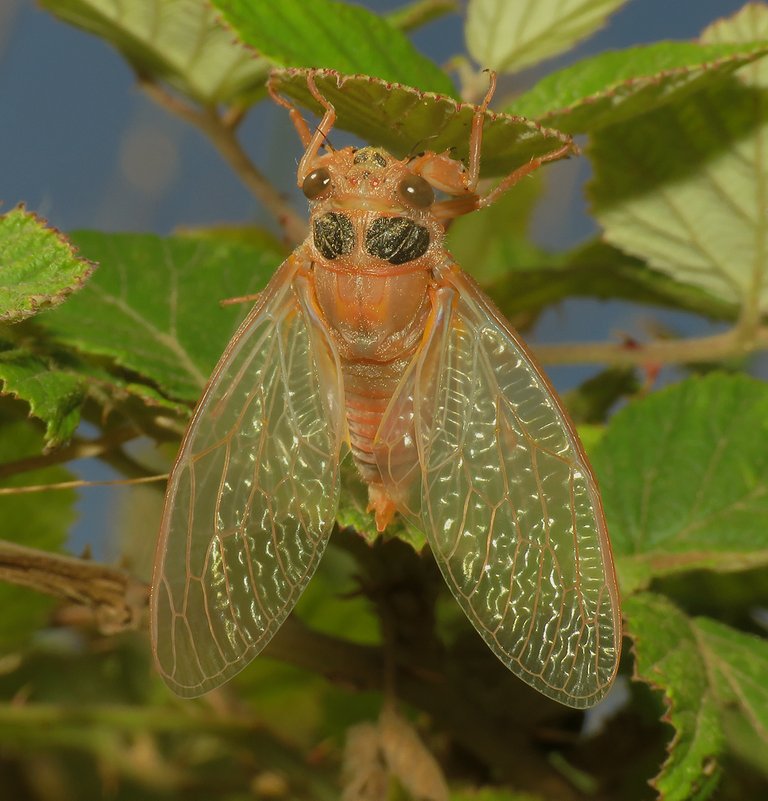
This is the Cicada orni, a very common ... and very loud species in this seaside area.
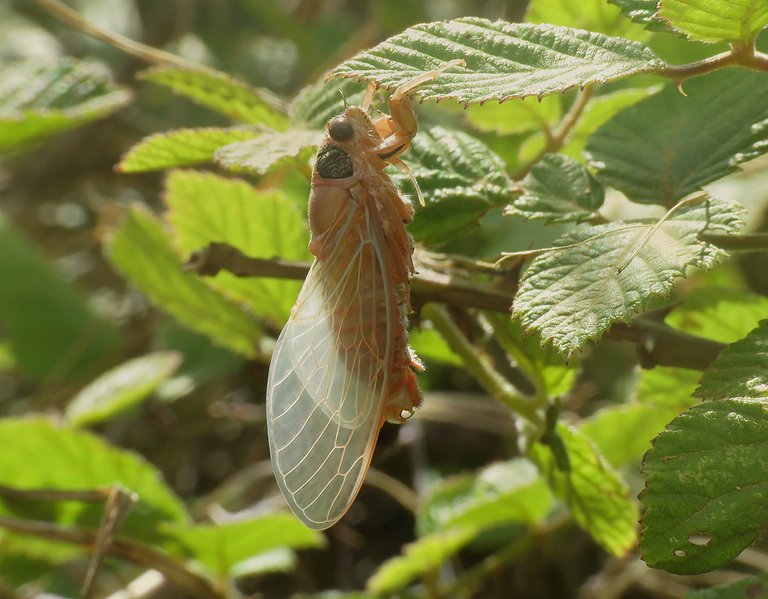
These cicadas are pretty big insects, so I made most of the photograph using the flesh, to have a small aperture and maximum depth of field, so that all the details are sharp and clear on the pictures, while still having enough speed in the shutter compartment to freeze the action with my trembling hands above the thorny branches. But ... I took a few difficult and challenging shots using the natural light, to show you the real beauty and elegance of these moments. This is one of those few photographs.

While the nymphs live several years in the underground feeding on roots ...
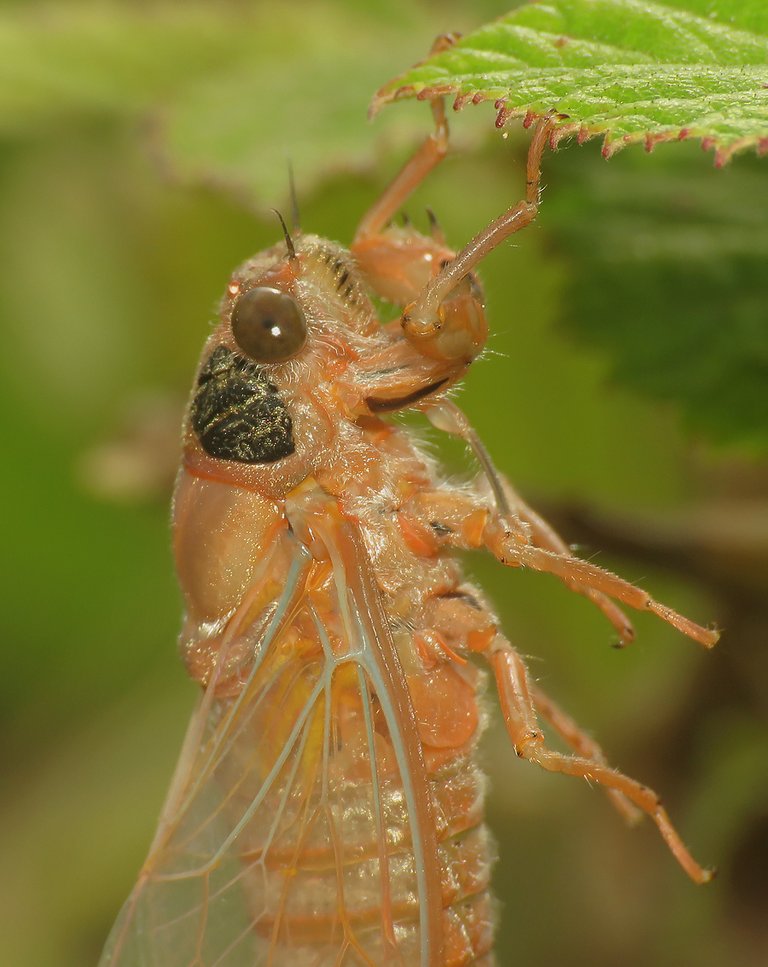
... the life span of the adult version of this particular species ...
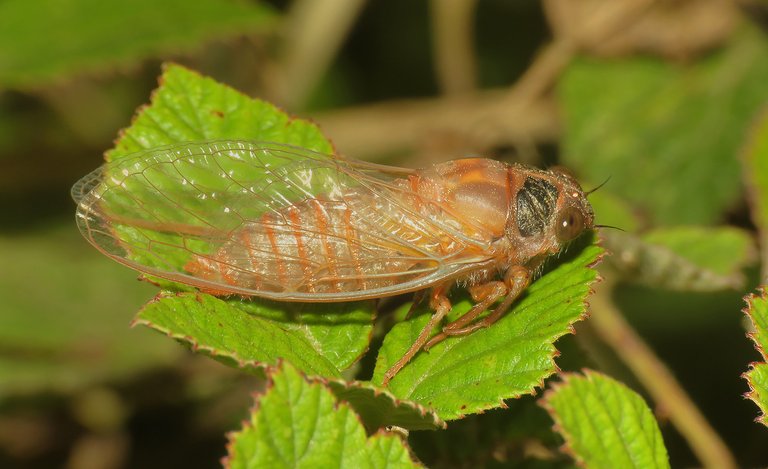
... is about one month ... or little more.
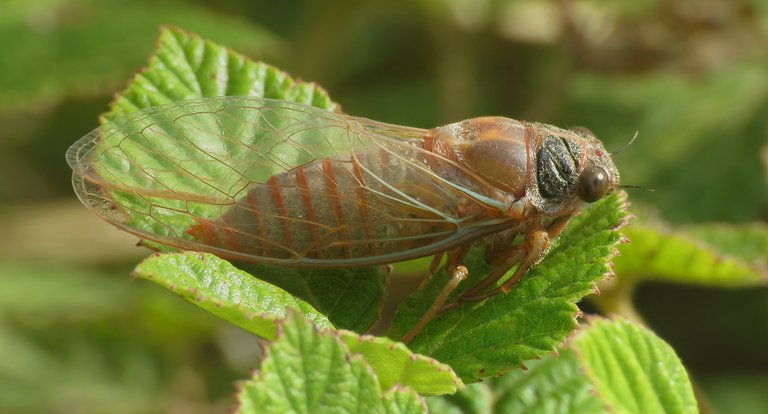
As adults, they feed on sap from trees or shrubs, using their piercing mouth parts well adapted for sucking.
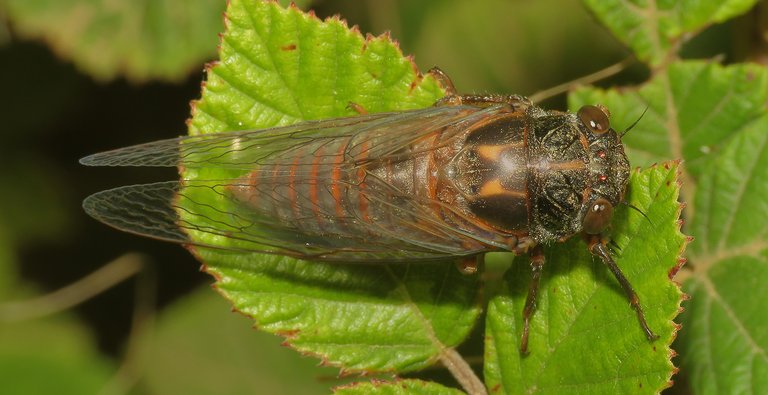
Only males produce their well-known calling song, a clicking sound caused by the contraction and relaxation of abdominal membranes.
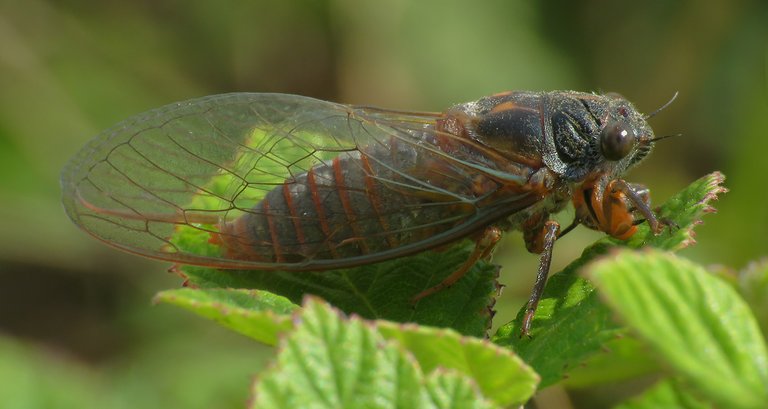
The transformation is now completed, so I'll end this long cicada - related section, and continue the post ...

... with a much smaller cicada relative - the Cercopis vulnerata froghopper. They can be seen jumping everywhere in the bush and on the meadows, so is no wonder that one of them ended up here, on the blackberry leaf.
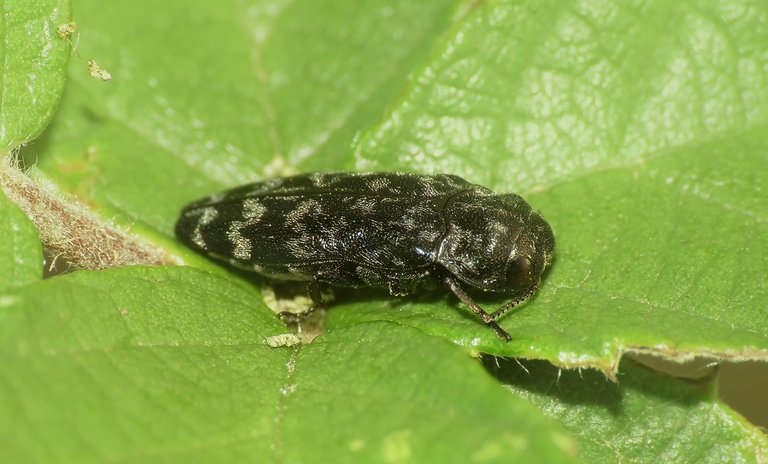
The Coraebus rubi, a pretty inconspicuous beetle from the Buprestidae familly filled with many shiny and colorful species.
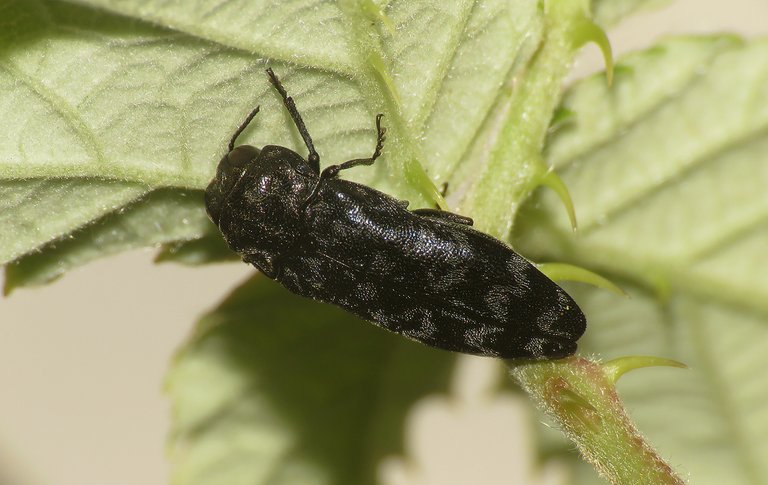
These Jewel beetles feed on the leaves of plants in the genera Rubus, Rosa, and Fragaria as adults.
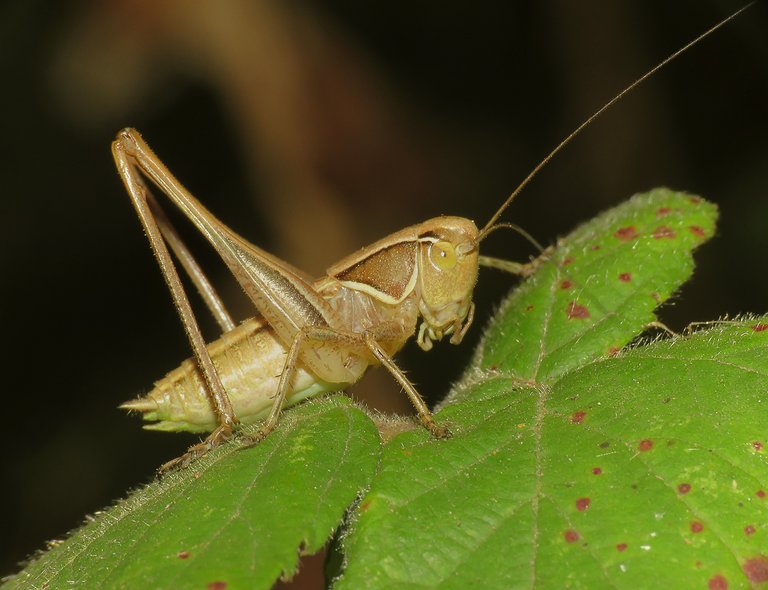
I don't know the exact species of this Bush - cricket nymph ... but on the following shot ...
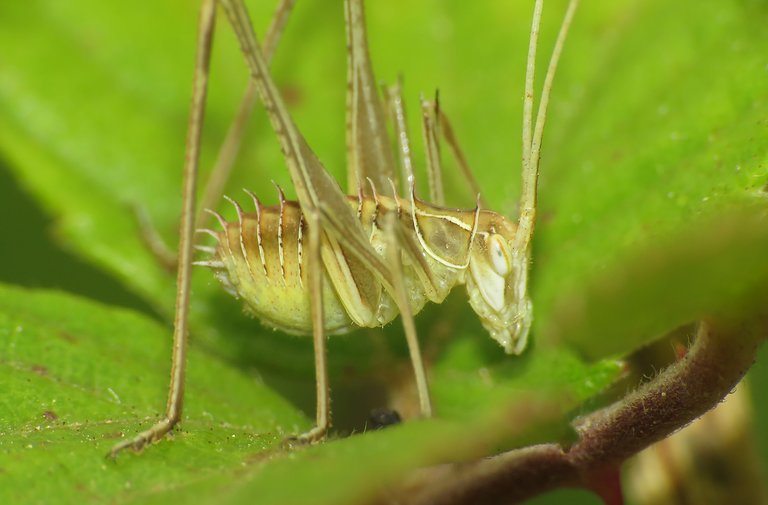
... you can see a very small, recently hatched nyph of the Tylopsis lilifolia Bush - cricket, a species you can see in its adult form in the yesterday's post of this thorny series.
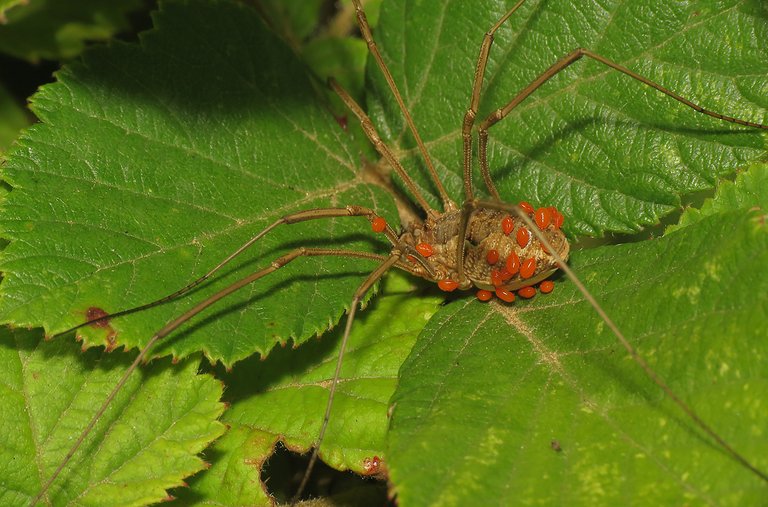
The Phalangium opilio is another species you already saw yesterday on the Scolymus hispanicus plant ...
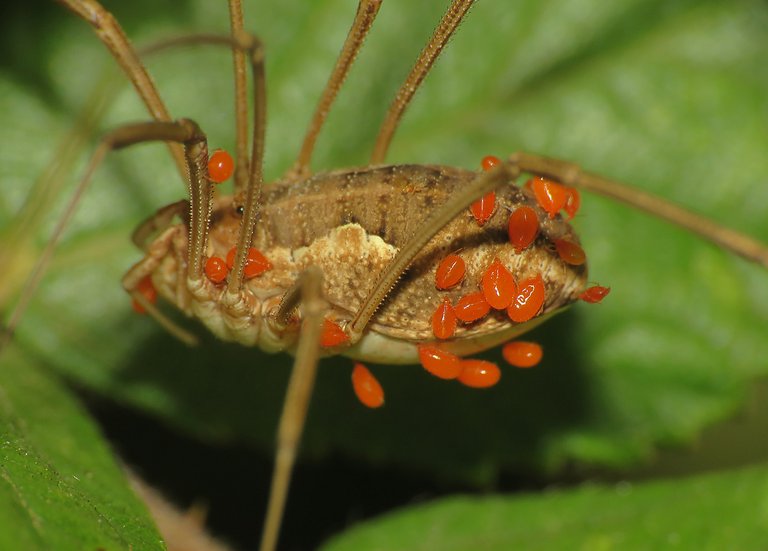
... but this one is accompanied by a colorful bunch of parasites.
 (Enlargeable)
(Enlargeable)
These minuscule arachnids parasitizing on the much bigger Harvestmen arachnid ...
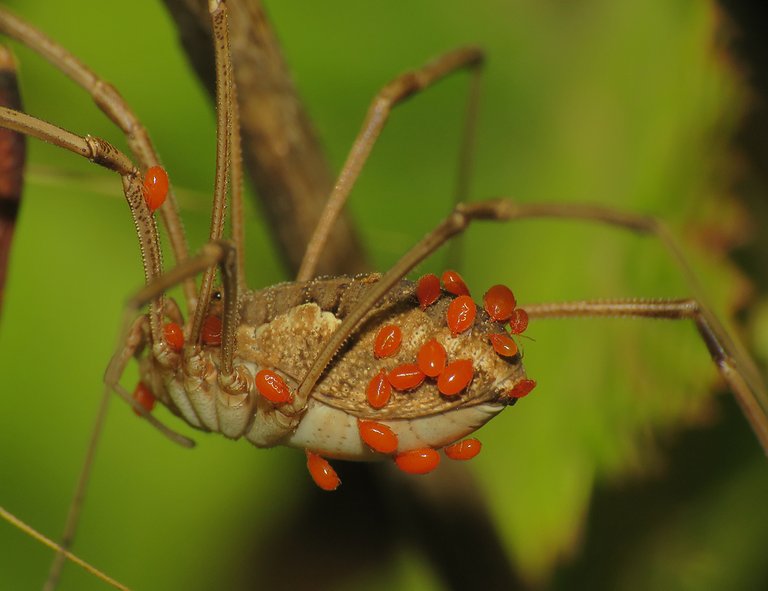
... are the larval forms of some mites from the Erythraeidae family. As adults, these red arachnids live as minuscule free predators.
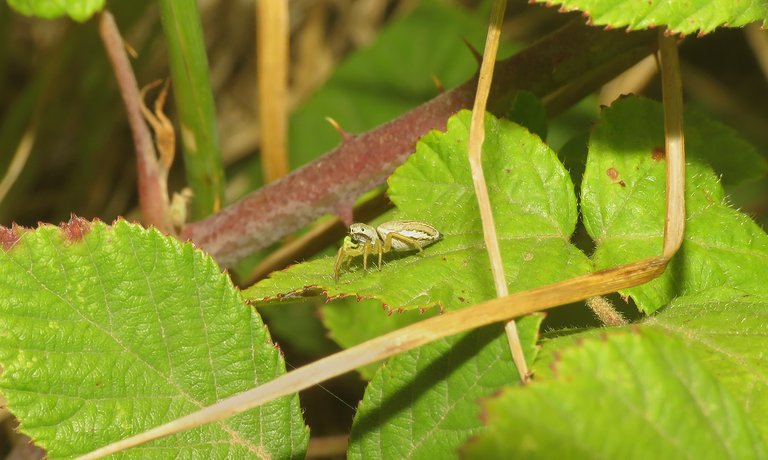
Here you can see anothe small arachnid. Small but not minuscule, a giant compared to the mites ...

... a jumping spider. I did a long and exhausting internet search, trying to find the exact species - but I failed. There are so many similar looking Salticidae around, and at the end, I'm not sure about this one.
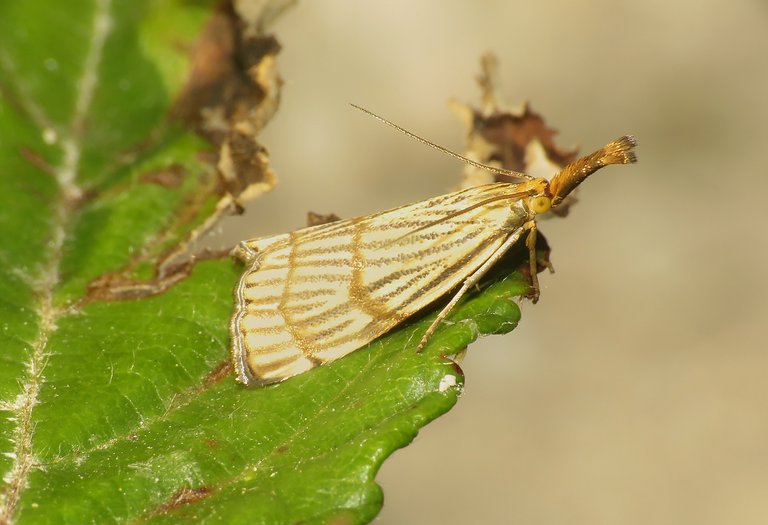
The same stuff I said about the jumping spider, can be applied to this small moth as well.To many similar looking species - I don't know which one is this.
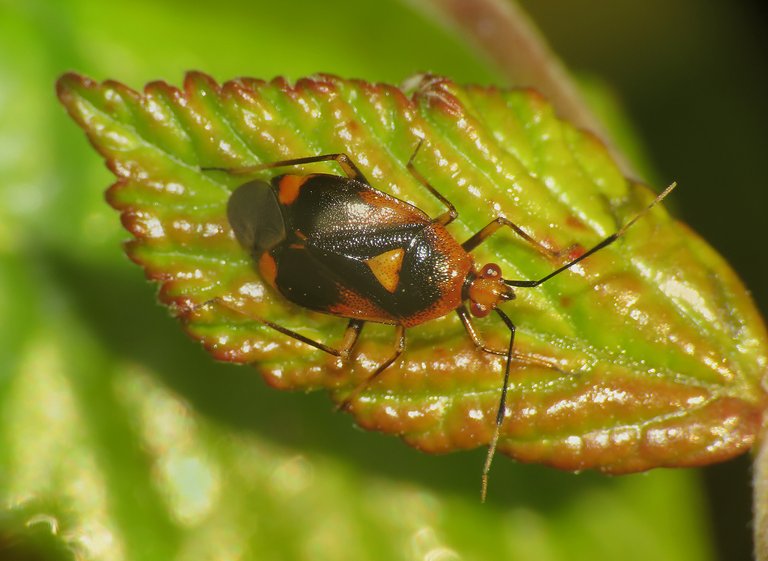
Here you can see the Deraeocoris ruber, a small bug from the Miridae family, resting on the young leaf.
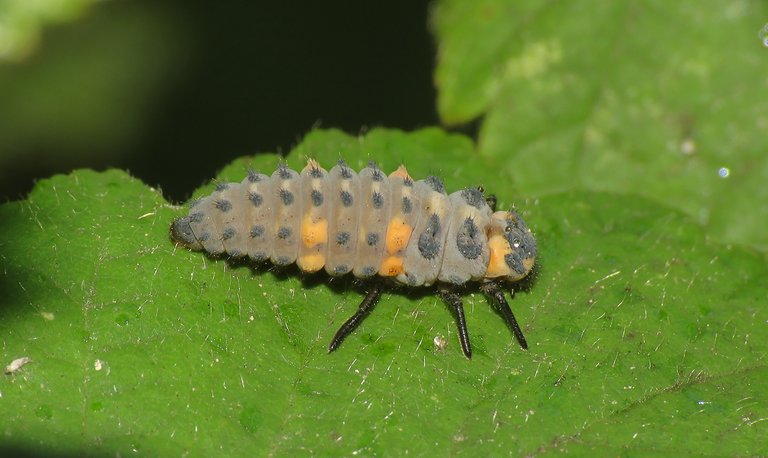
Lady beetle larvae are also sometimes present on these shrubs.
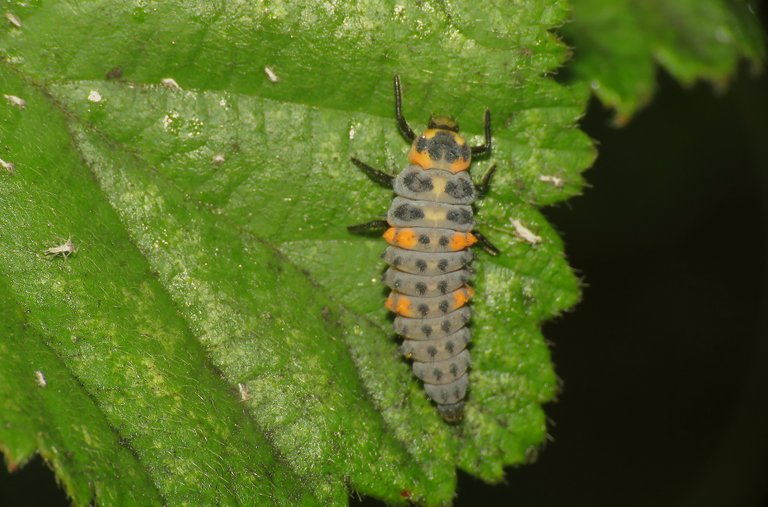 (Enlargeable)
(Enlargeable)
These are the larval forms of the very common and well-loved and known Seven-spot ladybird (Coccinella septempunctata) that you surely saw in many places, so I won't show the adult insect here. And also is a fact, that I saw no adults around when taking the photographs for this post.
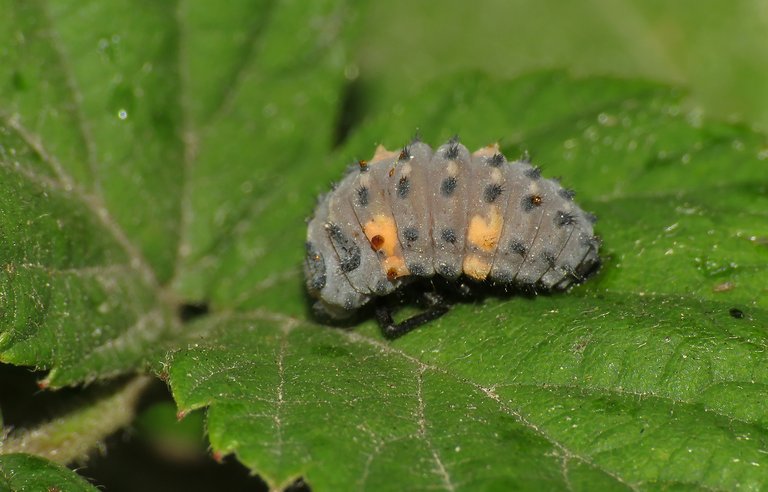
When is time for the metamorphosis ...
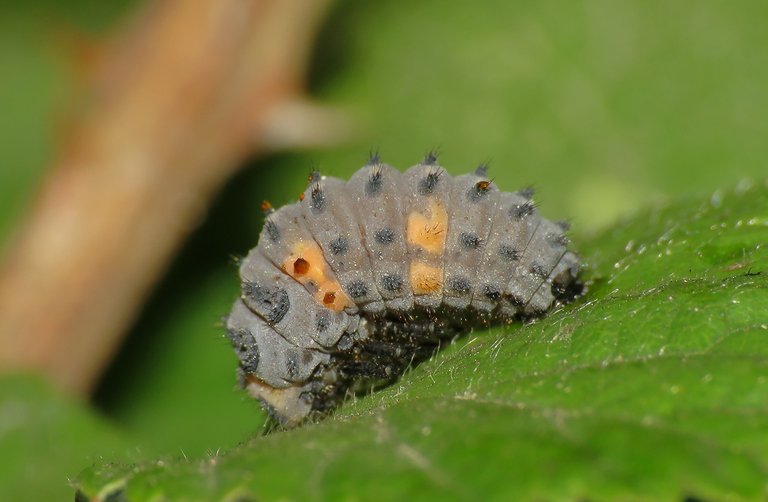
... the larva curls up and gets atached to a leaf ...
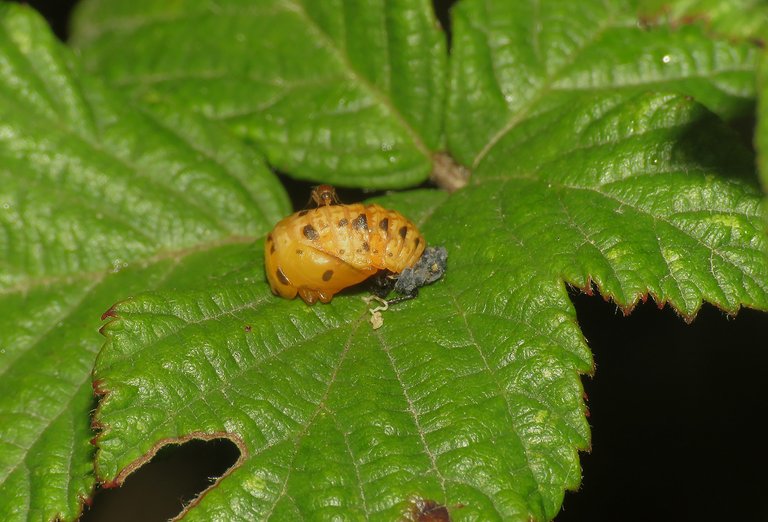
... sheds the blue skin and becomes a pupa.
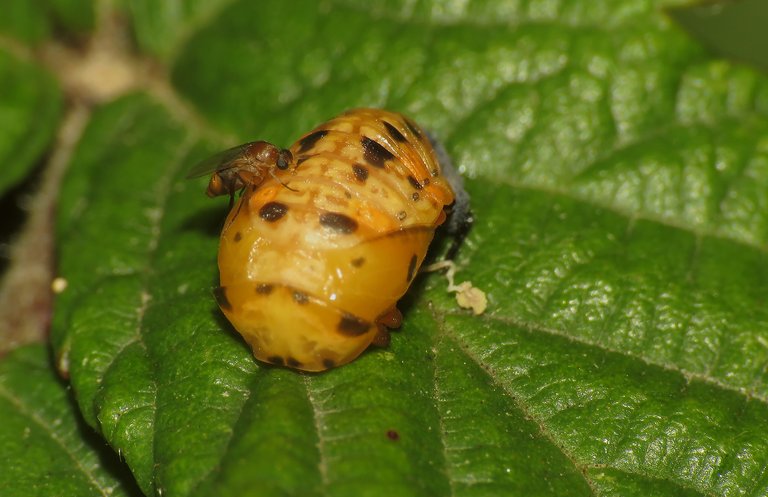 (Enlargeable)
(Enlargeable)
You can see a minuscule fly on this pupating Lady beetle.
I don't know what's the story behind this scene ... it looks like the fly is feeding on something on the pupae surface that looks slightly humid. And now ...
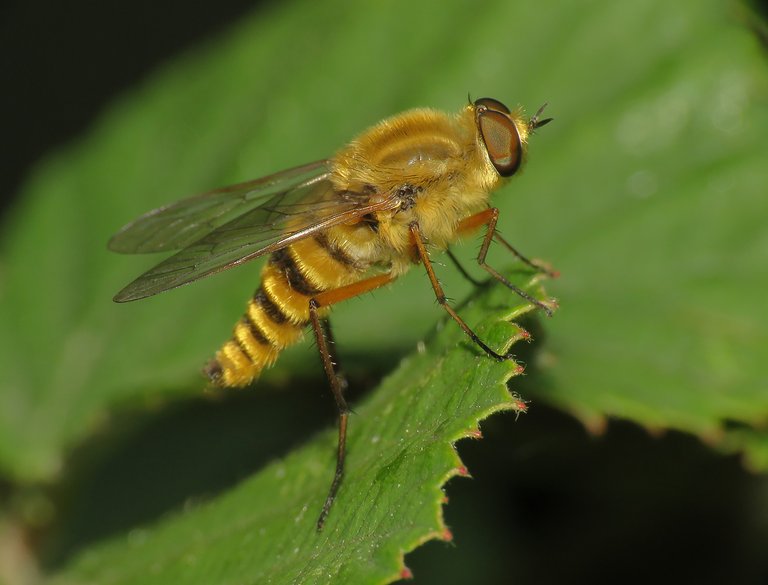
... with another fly, the furry Thereva aurata, resting on the Rubus fruticosus leaf ... is time to end this prickly trilogy ... hope you enjoyed these walks through the thorns ... as always in these posts on HIVE, all the photographs are my work - THE END.
I should grow blackberries to attract insects and butterflies!! The coastal area looks very nice and wild with berries and strange looking insects!
True :D
Thanks for your contribution to the STEMsocial community. Feel free to join us on discord to get to know the rest of us!
Please consider supporting our funding proposal, approving our witness (@stem.witness) or delegating to the @stemsocial account (for some ROI).
Please consider using the STEMsocial app app and including @stemsocial as a beneficiary to get a stronger support.
Your furry fly is actually beautiful. Do the mites on the Harvestmen arachnid serve any function (for the host) or are they purely parasitic?
A fascinating post.
Purely parasitic ... but they don't cause big damage to the host.
They really don't look pleasant. I think it's all that red.
True ... like some blood droplets.